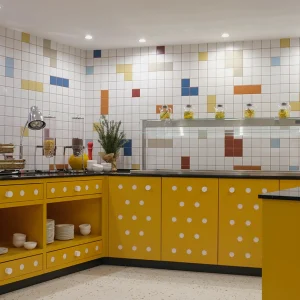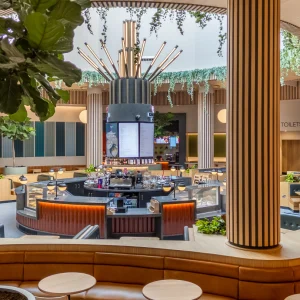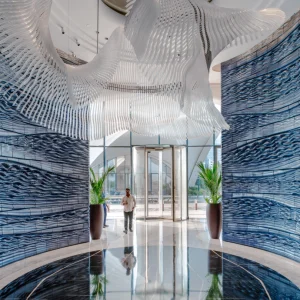
There is a common misconception that designing for a collection of restaurants requires a ‘cookie cutter’ approach. Contrary to this, we have often been approached by clients with roll-out restaurant brands who come to us because they want to create a distinguishing character for each individual site. In fact, on many an occasion we have been approached by such clients because they are attracted to our bespoke approach and like to challenge us to push creative boundaries while, of course, staying relevant to the core elements of the restaurant brand.
There is always the challenge of adapting key brand components to a new space or locality, but this is also very exciting and it works as a creative vehicle; the existence of these parameters allows designers a fantastic playground and context within which we can generate ideas with the client team. Often being given those boundaries will challenge design teams to take the elements they do have free rein on – such as materials and finishes – to a higher level with each new site, while keeping the site recognisable and familiar.

Latin American food restaurant chain Las Iguanas is an example of a chain that seeks out sophistication for its designs
Within the industry there is a real push against a template-design approach, as it isn’t working with current market audiences and customers are coming with higher expectations in terms of product, service and design. We are definitely finding that today’s customer is drawn to dining in spaces with a distinctive look and feel regardless of whether they are independent or part of a restaurant family.
Chain or collection restaurateurs that we are working with are incredibly committed to creating a great experience for their customers whether their offer is formal or casual, and are approaching all components of the experience in a sophisticated way where there is a high level of attention to detail and consistency. Las Iguanas, which we are working with on several projects, is a great example of this. In addition to pushing for a fresh and multifaceted approach to its interiors, where different sites are able to reflect different elements of Latin American culture, it is constantly researching and trialling new South American-style dishes and ensuring high levels of quality and consistency in its products.
By contrast, when we do work on new, independent restaurant brands, we will often be developing from a written brief, sometimes with some general look-and-feel images for inspiration, so there is a process of defining the identity of the restaurant of brand before you can really materialise the ideas.

The Pearson Room in Canary Wharf aims to reflect an individual’s living space
Different clients will approach us with briefs that are at a variety of different levels of development. If a client’s brief is very loose there is a process in ascertaining what the identity should be. When the brief is very detailed there is time involved in matching what the client has envisioned and working out how it might sit in an existing space and within a specific area, but the challenges of course breed creativity, which is fun.
We are noticing that ‘honesty’ and ‘one-off’ or ‘bespoke elements’ are key components to the independent restaurateur’s design. These could include using existing architecture to form the interior design, a name that reflects what the offer is, or even a view into the kitchen area so the customer can see the freshness of the produce.
The Pearson Room in Canary Wharf reflects the original, bespoke and one-off approach. The space was meant to reflect an individual’s living space and took inspiration from the stylised Fifties’ aesthetic. We worked with the client team to source a collection of unique objects such as telephones, vases, posters and books from that era. This approach is really carried through in all aspects of the space, including individually sourced vanity items in the washrooms and comfortable, generously sized lounge seating.
Working on independent projects will always see the use of individual pieces – whether it is furniture or bespoke finishes. The uniqueness of the space is exactly what new restaurateurs are looking to achieve to give a sense of identity to their offer.
Designers are continually meeting new challenges and trends within the hospitality sector and are always being pushed to develop concepts creatively, regardless of whether they are developing a design for a collection of restaurants or an individual offer. The key is to create a cohesive story that communicates well with customers; it seems that where there are opportunities for restaurant brands to develop multiple sites, these stories have the opportunity to become refined and developed, and elements can be reinvented. With independent offers there is the opportunity to invent a whole new story; which hopefully brings something fresh and new to the market, but essentially both offers are in essence working on the same endeavour – to captivate customers with new, relevant experiences and ideas.





